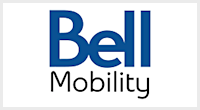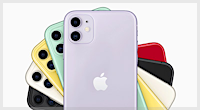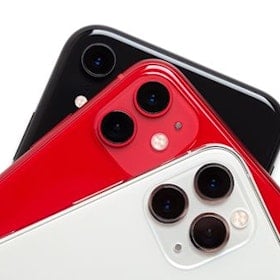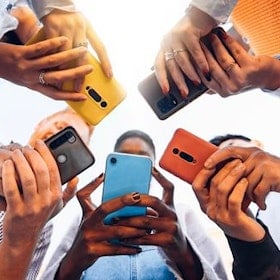 Hot on the heels of its Surface tablet announcement, Microsoft has finally unveiled Windows Phone 8. The new version of the increasingly popular OS is a significant improvement over its predecessors and has been almost completely rebuilt from the ground up. However, the new features and abilities have come at a price; because Windows Phone 8 is such a radical switch all current Windows Phone devices running WP7 or WP7.5 Mango will not be able to upgrade to Windows Phone 8. The news has come as a blow to WP users, many of which have only just made the switch by purchasing the recently released Nokia Lumia 900.
Hot on the heels of its Surface tablet announcement, Microsoft has finally unveiled Windows Phone 8. The new version of the increasingly popular OS is a significant improvement over its predecessors and has been almost completely rebuilt from the ground up. However, the new features and abilities have come at a price; because Windows Phone 8 is such a radical switch all current Windows Phone devices running WP7 or WP7.5 Mango will not be able to upgrade to Windows Phone 8. The news has come as a blow to WP users, many of which have only just made the switch by purchasing the recently released Nokia Lumia 900.
Why No Love for Current Customers?
The simple matter of it is that, for a long time now, even top-end Windows Phone handsets have been little more than mid-range competitors when it came to hardware or display quality. While Android was announcing quad-core handsets with 720p displays Windows Phone was pushing the Nokia Lumia 900, a phone with 480x800 resolution and a single-core 1.4GHz processor. If that doesn’t mean much to you let us just say that those specs might have been impressive a full year before its release, but even then it wouldn’t have won first-place.
The new release is designed for phones with beastly internals. 720p resolutions and ‘dual-core and more’ handsets will not only receive support, but be required. The new OS is much more graphics and CPU heavy than the old, meaning that the current line-up of Windows Phones with their out-dated hardware simply won’t be able to cut it. Microsoft is essentially jumping 2 or 3 generations of tech in one go; certainly what the platform needed but it may prove damaging in the short term by alienating the current user base.
WP was also drowning in a sea of no-name apps. Jumping from an iPhone to an Android might be a jarring experience for some, but at least a good slug of your favorite and familiar apps will still make the journey with you. The same could not be said for WP. There were certainly more than a few copy-cats, or satisfactory alternatives. But WP users were constantly left out in the cold when it came to things like cross-platform games such as Words With Friends or Draw Something. Windows Phone 8 has addressed this issue in a radical way that should hopefully solve this problem once and for all.
So as to not totally stick it to their loyal consumer base Microsoft has developed Windows Phone 7.8, which will bring some of the new WP8 features to current handsets. It’s not too clear precisely that that entails just yet, but we at least know that the new Start Screen will be coming to 7.8.
 A New Look
A New Look
The new Start Screen for Windows Phone 8 should help to address one of the major problems with Windows Phone; lack of personal customization. While Live Tiles did, in their own way, add your own touch to the Home menu, most WP handsets did end up looking the same at first glance. The new setup allows users to resize their live tiles, creating not only a more unique appearance for each person, but also increasing functionality.
One of the entire points of the Live Tile setup is that users can grab useful information at a glance, without having to open up apps or access a notification tray. However, the original setup granted an equal amount of screen real-estate for every feature. This wasn’t exactly optimal, as many users place different levels of importance on different areas of their handset’s functionality. The black gutter located to the right-hand side of the screen has also been scrapped in order to provide more room. It’s good to hear this, but we’re still curious as to why it was ever included in the first place.
The new system can allow a user to cram needed, but less-useful features in to smaller areas while enlarging the Tiles that they most often want to glean information from.
There are also reportedly going to be more colors to choose from in the color theme section. This is a simple and great way of increasing device customization.
All up the new home screens are a big tick in the positive column for Microsoft that even current WP users can look forward to in the WP7.8 update.
A New Age of App Support
Windows Phone 8 sounds like a massive step in the right direct for not just the Windows Phone platform, but for mobile operating systems (Mobile OSes) in general. This is primarily because the Windows Phone 8 platform is very closely based on the upcoming Windows 8 OS, soon to be released by Microsoft. To be more precise, both Windows 8 and Windows Phone 8 will be based on the same NT Kernel.
The advantages to this are huge. It’s been well known for some time now that app support is crucial for a mobile OS to survive and app support is exactly what WP hasn’t been getting much of. Now, however, game and app developers who write for Windows 8 will find it very easy to simply port their software over to the Windows Phone 8 platform. This not only means that a tonne of handy little apps will start popping up in the WP marketplace, but we can expect to see some truly killer games start hitting the new platform pretty quickly.
To put that in to a bit more perspective, Windows Phone 8 supports the Havok graphics engine. Havok is the engine on which current games such as Skyrim and Assassin’s creed are built. So as you can see, Microsoft is really trying to take gaming to the next level, rather than merely providing funky little low-requirement puzzlers.
Previously developers have been hesitant to work with Windows Phone, simply because the investment compared to potential reward was not in their favor. But, for someone who has already made something for Windows 8, adding a simple port over to Windows 8 isn’t much of a commitment at all, especially when compared to how many more consumers they could reach in the process.
Not only should we see app and game support increase for Windows Phone, but developers porting their Windows software over to WP means that users can enjoy a more seamless experience when interfacing with their tech. Soon Windows desktops and tablets will be running the exact same OS and Windows Phones will support something very similar. This is exactly the kind of thing that Apple has been trying to do for years and has been one of the major reasons for the success of the iPhone and iPad, as well as significantly boosting sales in Mac laptops and desktops.
Unfortunately for current WP users (Windows Phone 7 and Windows Phone Mango), any of these new apps designed for Windows Phone 8 will not be available on the WP7 marketplace.
Catching up With Hardware
As mentioned earlier, WP has always lagged behind the competition in terms of hardware. This wasn’t the biggest problem, as the end user experience can still be fast and smooth with the proper software. However, things like screen resolution could definitely not be ignored. While iPhones have had their impressive retina displays since the iPhone 4 and with Android introducing 720p devices the 480x800 maximum for Windows Phone was laughable at best. It didn’t matter too much when smartphones kept themselves to around 3.7-4 inch displays, but once the market moved beyond that the lower resolution of WP handsets was glaringly inferior.
WP8 will support 720p and WXGA resolutions, bringing it in line with the current Android market. Unfortunately no mention of 1080p was mentioned, so the future-proofing of WP8 isn’t too solid in the display department. However, it’s possible that Microsoft left itself some wiggle-room that could lead to 1080p coming with an update in the future.
WP devices have also been limited to single-core CPUs. WP8 will change this, with dual-core coming at the outset and apparently more-powerful processors to come after that. It’s a great move, and one that is completely necessary if Microsoft’s dreams of porting games from Windows to Windows Phone is to even have a chance of coming true.
There will also be NFC and digital wallet features. The inclusion of NFC might lead to some cool options for data transfer between smartphones and tablets/computers, but we’re not holding our breath. NFC has been on the table for a while now and we’re only just barely beginning to see manufacturers utilize it in meaningful and useful ways. The same can be said for digital wallets. Replacing one’s credit card with a phone may sound great to some in theory, but there is currently a substantial lack of support from vendors and retailers. In time, perhaps, we’ll start seeing people using their phones for casual payments more often, but probably not too soon.
Will it Be Enough?
The updates coming to Windows Phone 8 certainly give it a fighting chance in the smartphone market. Probably the biggest positive is the unifying of the Windows and Windows Phone experiences. It may not sound like much, and many users may not even directly notice the benefits, but the potential for app support, game development and a more unified experience across multiple devices is phenomenal.
The new hardware support coupled with a more customisable interface is great for both customers and manufacturers, as a more diverse Windows Phone ecosystem is sure to develop.
However, Windows Phone has struggled to build a consumer base since its inception. So far it’s managed to forge a fairly loyal and happy culture of users with more transferring over every day. Unfortunately those users have now been left out in the cold with undersupported and obsolete devices. The move is sure to cost Microsoft a lot of repeat customers in the short term, just how much damage will come from it is yet to be seen.
If the Windows Phone platform’s stilted users don’t leave en-masse then there should be good times ahead for Windows Phone. But it’s going to be a struggle getting the momentum rolling again. There are definitely some interesting times ahead for Microsoft and the Windows Phone platform.
Related Articles
Related Topics
Microsoft Windows Phone Windows Phone 8Popular Topics
Android Apple iPhone Samsung Google iOS Cell phone plans Rogers Telus BellFind Better Phones and Plans
Hundreds of cell phone plans unpacked. All the facts. No surprises.




































